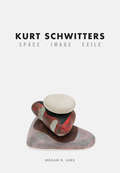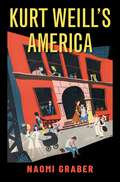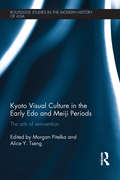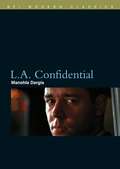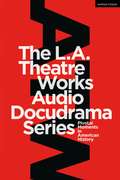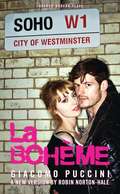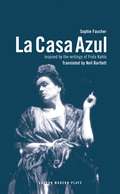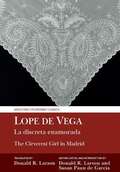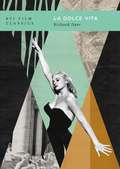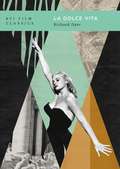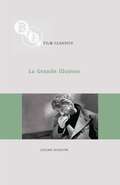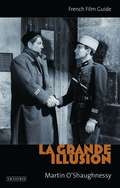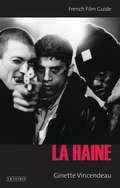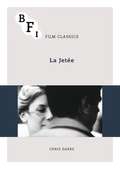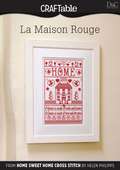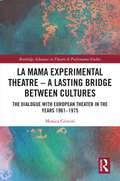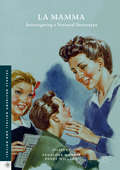- Table View
- List View
Kurt Schwitters: Space, Image, Exile
by Megan R. LukeGerman artist Kurt Schwitters (1887–1948) is best known for his pioneering work in fusing collage and abstraction, the two most transformative innovations of twentieth-century art. Considered the father of installation art, Schwitters was also a theorist, a Dadaist, and a writer whose influence extends from Robert Rauschenberg and Eva Hesse to Thomas Hirschhorn. But while his early experiments in collage and installation from the interwar period have garnered much critical acclaim, his later work has generally been ignored. In the first book to fill this gap, Megan R. Luke tells the fascinating, even moving story of the work produced by the aging, isolated artist under the Nazi regime and during his years in exile. Combining new biographical material with archival research, Luke surveys Schwitters’s experiments in shaping space and the development of his Merzbau, describing his haphazard studios in Scandinavia and the United Kingdom and the smaller, quieter pieces he created there. She makes a case for the enormous relevance of Schwitters’s aesthetic concerns to contemporary artists, arguing that his later work provides a guide to new narratives about modernism in the visual arts. These pieces, she shows, were born of artistic exchange and shaped by his rootless life after exile, and they offer a new way of thinking about the history of art that privileges itinerancy over identity and the critical power of humorous inversion over unambiguous communication. Packed with images, Kurt Schwitters completes the narrative of an artist who remains a considerable force today.
Kurt Weill's America
by Naomi GraberThroughout his life, German-Jewish composer Kurt Weill was fascinated by the idea of America. His European works depict America as a Capitalist dystopia. But in 1935, it became clear that Europe was no longer safe for Weill, and he set sail for New World, and his engagement with American culture shifted. From that point forward, most of his works concerned the idea of "America," whether celebrating her successes, or critiquing her shortcomings. As an outsider-turned-insider, Weill's insights into American culture were unique. He was keenly attuned to the difficult relationship America had with her immigrants, but was slower to grasp the subtleties of others, particularly those surrounding race relations, even though his works reveal that he was devoted to the idea of racial equality. The book treats Weill as a node in a transnational network of musicians, writers, artists, and other stage professionals, all of whom influenced each other. Weill sought out partners from a range of different sectors, including the Popular Front, spoken drama, and the commercial Broadway stage. His personal papers reveal his attempts to navigate not only the shifting tides of American culture, but the specific demands of his institutional and individual collaborators. In reframing Weill's relationship with immigration and nationality, the book also puts nuance contemporary ideas about the relationships of immigrants to their new homes, moving beyond ideas that such figures must either assimilate and abandon their previous identities, or resist the pull of their new home and stay true to their original culture.
Kurt Weill's America
by Naomi GraberThroughout his life, German-Jewish composer Kurt Weill was fascinated by the idea of America. His European works depict America as a Capitalist dystopia. But in 1935, it became clear that Europe was no longer safe for Weill, and he set sail for New World, and his engagement with American culture shifted. From that point forward, most of his works concerned the idea of "America," whether celebrating her successes, or critiquing her shortcomings. As an outsider-turned-insider, Weill's insights into American culture were unique. He was keenly attuned to the difficult relationship America had with her immigrants, but was slower to grasp the subtleties of others, particularly those surrounding race relations, even though his works reveal that he was devoted to the idea of racial equality. The book treats Weill as a node in a transnational network of musicians, writers, artists, and other stage professionals, all of whom influenced each other. Weill sought out partners from a range of different sectors, including the Popular Front, spoken drama, and the commercial Broadway stage. His personal papers reveal his attempts to navigate not only the shifting tides of American culture, but the specific demands of his institutional and individual collaborators. In reframing Weill's relationship with immigration and nationality, the book also puts nuance contemporary ideas about the relationships of immigrants to their new homes, moving beyond ideas that such figures must either assimilate and abandon their previous identities, or resist the pull of their new home and stay true to their original culture.
Kyoto Visual Culture in the Early Edo and Meiji Periods: The arts of reinvention (Routledge Studies in the Modern History of Asia)
by Morgan Pitelka Alice Y. TsengThe city of Kyoto has undergone radical shifts in its significance as a political and cultural center, as a hub of the national bureaucracy, as a symbolic and religious center, and as a site for the production and display of art. However, the field of Japanese history and culture lacks a book that considers Kyoto on its own terms as a historic city with a changing identity. Examining cultural production in the city of Kyoto in two periods of political transition, this book promises to be a major step forward in advancing our knowledge of Kyoto’s history and culture. Its chapters focus on two periods in Kyoto’s history in which the old capital was politically marginalized: the early Edo period, when the center of power shifted from the old imperial capital to the new warriors’ capital of Edo; and the Meiji period, when the imperial court itself was moved to the new modern center of Tokyo. The contributors argue that in both periods the response of Kyoto elites—emperors, courtiers, tea masters, municipal leaders, monks, and merchants—was artistic production and cultural revival. As an artistic, cultural and historical study of Japan's most important historic city, this book will be invaluable to students and scholars of Japanese history, Asian history, the Edo and Meiji periods, art history, visual culture and cultural history.
Kyoto Visual Culture in the Early Edo and Meiji Periods: The arts of reinvention (Routledge Studies in the Modern History of Asia)
by Morgan Pitelka Alice Y. TsengThe city of Kyoto has undergone radical shifts in its significance as a political and cultural center, as a hub of the national bureaucracy, as a symbolic and religious center, and as a site for the production and display of art. However, the field of Japanese history and culture lacks a book that considers Kyoto on its own terms as a historic city with a changing identity. Examining cultural production in the city of Kyoto in two periods of political transition, this book promises to be a major step forward in advancing our knowledge of Kyoto’s history and culture. Its chapters focus on two periods in Kyoto’s history in which the old capital was politically marginalized: the early Edo period, when the center of power shifted from the old imperial capital to the new warriors’ capital of Edo; and the Meiji period, when the imperial court itself was moved to the new modern center of Tokyo. The contributors argue that in both periods the response of Kyoto elites—emperors, courtiers, tea masters, municipal leaders, monks, and merchants—was artistic production and cultural revival. As an artistic, cultural and historical study of Japan's most important historic city, this book will be invaluable to students and scholars of Japanese history, Asian history, the Edo and Meiji periods, art history, visual culture and cultural history.
L.A. Confidential (BFI Film Classics)
by Manohla DargisL.A. Confidential was released in 1997 to huge critical acclaim and it went on to be nominated for nine Academy Awards. Its reputation has since grown to the point that the film is now widely seen as a key Hollywood movie of the 1990s. But it fared poorly at the box-office, having neither big-name stars nor the sop of a comforting moral universe. With characters so bad they were irresistible, the film harked back to an older, darker Hollywood at a time when audiences would soon be flocking to 'Titanic'. Directed by Curtis Hanson from the best-selling novel by James Ellroy, 'L.A. Confidential' stars Kim Basinger alongside Kevin Spacey, Danny DeVito and, to the surprise of many industry watchers, two then relative unknowns, New Zealander Russell Crowe and Australian Guy Pearce. The film is a consummate thriller which takes in - without once losing sight of the human cost - police corruption, organized crime, the sleaze press, high-class prostitution, murder and the ways movies and life twist together. Manohla Dargis explores the careers of Hanson and Ellroy, based on interviews with both men, to dig deep into the film's obsession with the twinned, equally troubled histories of the Hollywood studio system and the city of Los Angeles. She untangles the paradox of 'L.A. Confidential', a film that paints a jet black, melancholy picture of a city and an industry even as it also testifies to - and exemplifies beautifully - their seductive glamour.
L.A. Confidential (BFI Film Classics)
by Manohla DargisL.A. Confidential was released in 1997 to huge critical acclaim and it went on to be nominated for nine Academy Awards. Its reputation has since grown to the point that the film is now widely seen as a key Hollywood movie of the 1990s. But it fared poorly at the box-office, having neither big-name stars nor the sop of a comforting moral universe. With characters so bad they were irresistible, the film harked back to an older, darker Hollywood at a time when audiences would soon be flocking to 'Titanic'. Directed by Curtis Hanson from the best-selling novel by James Ellroy, 'L.A. Confidential' stars Kim Basinger alongside Kevin Spacey, Danny DeVito and, to the surprise of many industry watchers, two then relative unknowns, New Zealander Russell Crowe and Australian Guy Pearce. The film is a consummate thriller which takes in - without once losing sight of the human cost - police corruption, organized crime, the sleaze press, high-class prostitution, murder and the ways movies and life twist together. Manohla Dargis explores the careers of Hanson and Ellroy, based on interviews with both men, to dig deep into the film's obsession with the twinned, equally troubled histories of the Hollywood studio system and the city of Los Angeles. She untangles the paradox of 'L.A. Confidential', a film that paints a jet black, melancholy picture of a city and an industry even as it also testifies to - and exemplifies beautifully - their seductive glamour.
The L.A. Theatre Works Audio Docudrama Series: Pivotal Moments in American History
by Bloomsbury PublishingA unique play anthology featuring five gripping docudramas originally commissioned by L.A. Theatre Works that each explore pivotal moments in 20th century U.S history.With ensemble casts and innovative staging potential these plays are perfect for theatre companies, schools and educational groups looking to stage familiar historical stories in new and original ways. Each play is accompanied by dramaturgical notes that help contextualize and analyze both the events themselves and the dramatic form in which they are presented.The scripts included are:The Great Tennessee Monkey Trial by Peter GoodchildThe Real Dr. Strangelove by Peter Goodchild RFK: The Journey to Justice by Murray Horwitz and Jonathan EstrinThe Chicago Conspiracy Trial by Peter GoodchildTop Secret: The Battle for the Pentagon Papers by Geoffrey Cowan and Leroy Aarons (Winner of theCorporation for Public Broadcasting Best Live Entertainment Award, 1992)As well as five scripts this anthology includes a foreword by Professor Michael Hackett, professor of directing and theatre history at UCLA School of Theater, Film and Television.
The L.A. Theatre Works Audio Docudrama Series: Pivotal Moments in American History
by Bloomsbury PublishingA unique play anthology featuring five gripping docudramas originally commissioned by L.A. Theatre Works that each explore pivotal moments in 20th century U.S history.With ensemble casts and innovative staging potential these plays are perfect for theatre companies, schools and educational groups looking to stage familiar historical stories in new and original ways. Each play is accompanied by dramaturgical notes that help contextualize and analyze both the events themselves and the dramatic form in which they are presented.The scripts included are:The Great Tennessee Monkey Trial by Peter GoodchildThe Real Dr. Strangelove by Peter Goodchild RFK: The Journey to Justice by Murray Horwitz and Jonathan EstrinThe Chicago Conspiracy Trial by Peter GoodchildTop Secret: The Battle for the Pentagon Papers by Geoffrey Cowan and Leroy Aarons (Winner of theCorporation for Public Broadcasting Best Live Entertainment Award, 1992)As well as five scripts this anthology includes a foreword by Professor Michael Hackett, professor of directing and theatre history at UCLA School of Theater, Film and Television.
La Boheme: Quatre Actes... (Oberon Modern Plays)
by Giacomo Puccini Robin Norton-HaleOperaUpClose’s electric new English translation of La Bohème charts the ups and downs of a group of idealistic graduates as they bicker, party, try to make ends meet and follow their dreams. Having wowed audiences at The Cock Tavern Theatre in Kilburn in a record-breaking, sell-out six-month run, as well as an acclaimed transfer at Soho Theatre, this contemporary re-telling of La Bohème won Best Off-West End Production at the Whatsonstage.com Awards, and the Olivier Award for Best New Opera Production.
La Casa Azul: inspired by the writings of Frida Kahlo (Oberon Modern Plays)
by Neil Bartlett Sophie FaucherI took my tears and turned them into paintings' In the electric calm of a blue-painted room, a dying woman reassembles the images of an extraordinary life. The woman is Mexican painter Frida Kahlo. The life is one of struggle - with love, with the body, with her country, and most of all, with her art.La Casa Azul is a collaboration between Quebeçois playwright Sophie Faucher, who also played Frida Kahlo in this production, and internationally acclaimed director Robert Lepage.
La discreta enamorada / The Cleverest Girl in Madrid: Lope de Vega (Aris & Phillips Hispanic Classics)
This book is a Spanish/English edition of Lope de Vega’s La discreta enamorada. The core of the book consists of two texts: a critical edition of Lope’s play in Spanish and Donald R. Larson’s English translation/adaptation of that work. Common to the two texts are explanatory notes focusing on historical, cultural, and literary references. The Spanish text is further clarified by elucidations of difficult words or passages. The texts are preceded by a substantial introduction (discussing conventions of comedy, the comedia de capa y espada and its variation known as the comedia urbana, the political, social, and economic contexts of early 17th-century Madrid) and are followed by a critical apparatus that lists important variants that may be found in previous editions of Lope’s play.
La dolce vita (BFI Film Classics)
by Richard DyerFellini's La dolce vita has been a phenomenon since before it was made, a scandal in the making and on release in 1960 and a reference point ever since. Much of what made it notorious was its incorporation of real people, events and lifestyles, making it a documentation of its time. It uses performance, camera movement, editing and music to produce a striking aesthetic mix of energy and listlessness, of exuberance and despair. Richard Dyer's study considers each of these aspects of the film – phenomenon, document, aesthetic – and argues that they are connected. Beginning with the inspirations and ideas that were subsequently turned into La dolce vita, Dyer then explores the making of the film, the film itself and finally its critical reception, providing engaging new insights into this mesmerising piece of cinema.
La dolce vita (BFI Film Classics)
by Richard DyerFellini's La dolce vita has been a phenomenon since before it was made, a scandal in the making and on release in 1960 and a reference point ever since. Much of what made it notorious was its incorporation of real people, events and lifestyles, making it a documentation of its time. It uses performance, camera movement, editing and music to produce a striking aesthetic mix of energy and listlessness, of exuberance and despair. Richard Dyer's study considers each of these aspects of the film – phenomenon, document, aesthetic – and argues that they are connected. Beginning with the inspirations and ideas that were subsequently turned into La dolce vita, Dyer then explores the making of the film, the film itself and finally its critical reception, providing engaging new insights into this mesmerising piece of cinema.
La Grande Illusion (BFI Film Classics)
by Julian JacksonJean Renoir's 1937 film La Grande Illusion is set during the First World War, but its themes of Franco-German conflict, divided loyalties in a time of war and the rise of anti-Semitism made it compelling and controversial viewing. Julian Jackson traces the film's historical context and its reception history.
La Grande Illusion: French Film Guide (Ciné-File French Film Guides)
by Martin O'ShaughnessyDirected by the great Jean Renoir, 'La Grande Illusion' (1937) is the finest of all anti-war films and a cinematic masterwork. Other films oppose war by showing its horror. Renoir's film holds the horror at arm's length to give us a clearer view of it. A prisoner-of-war drama, with brilliant performances from leading stars of its period, including Erich von Stroheim and Jean Gabin, the film combines popular appeal with a formal brilliance that allows a complex examination of how classes, nations and genders relate to one another. In this comprehensive and readable companion to the film, Martin O'Shaughnessy underlines its sharp intelligence. He shows how, not content to register the world as it is, the film plays off competing historical possibilities against each other, facing the public with their responsibility to shape the future. Locating the film in the context of Renoir's career, O'Shaughnessy discusses its use of stars, production history, set design and reception. He compares known drafts of the film with a previously undiscovered story outline, casting important new light on its genesis. Stressing how it spoke to its times, he also demonstrates how it speaks to us now.'Ginette Vincendeau has assembled an elite corps of film scholars to address a marvellous array of modern and classic French films with the close-up scrutiny they deserve.' - Dudley Andrew
La Haine: French Film Guide (Ciné-File French Film Guides)
by Ginette VincendeauReleased in 1995, La Haine is the black and white chronicle of 24 hours in the life of a mixed-race young male trio from a run-down Parisian suburb. The work of a then unknown young team (director and actors were all under 30), it became hugely and unexpectedly successful, launchingdirector Mathieu Kassovitz and lead player Vincent Cassel to stardom.The film's combination of hard-hitting social exposé, stylish black and white cinematography and hip-hop culture also turned it into an enduring cult movie with younger viewers. With great style and insight, Ginette Vincendeau provides a thorough understanding of the context of the film's making, its narrative tension, stylistic sophistication and ideological ambiguity and of its extraordinary success nationally and internationally. She thus explains why, out of so many films about disaffected youth, La Haine is the one that caught the imagination, becoming an instant classic.
La Jetée (BFI Film Classics)
by Chris DarkeChris Marker's La Jetée is 28 minutes long and almost entirely made up of black-and-white still images. Since its release in 1964, the film – which Marker described as a 'photo-novel' – has haunted generations of viewers and inspired writers, artists and film-makers. Its spiralling narrative of post-nuclear war time-travel narrative has influenced many other films, including the Terminator series and Terry Gilliam's Hollywood 'remake' Twelve Monkeys (1995).But as Marker rarely gave interviews, little is really known about the origins of La Jetée or the ideas behind it. In this groundbreaking study, Chris Darke draws on rare archival material, including previously unpublished correspondence and production documents, to examine the making of the film. He explores how Marker's only fiction film was influenced both by his early work as a writer and by Alfred Hitchcock's Vertigo (1958), and considers how La Jetée's imagery can be seen to 'echo' throughout Marker's extraordinarily diverse oeuvre.
La La Land (Oxford Guides to Film Musicals)
by Hannah LewisIn this Oxford Guide to Film Musicals, author Hannah Lewis gives readers fascinating new insights into the development, style, and reception of the 2016 film musical La La Land. Directed by Damien Chazelle with music by Justin Hurwitz, the film tells the story of a romance between an aspiring actress and jazz pianist as the two pursue their dreams in Los Angeles. It uses a vintage form to tell a modern story and its blend of nostalgia and realism made it an instant classic even as it prompted a range of critical and audience responses. Drawing on extensive personal interviews with director Damien Chazelle, composer Justin Hurwitz, choreographer Mandy Moore, and lyricists Benj Pasek and Justin Paul, the book explores La La Land's aesthetic approach to the film musical genre, particularly its engagement with and subversion of the classic Hollywood musical's stylistic and narrative expectations. Lewis offers readers ways of listening to the film's depiction of jazz, focusing especially on how race and genre intersect in its narrative. She also reveals new insights into the film's reception, showing how the critical response from its premiere to its place at the Academy Awards reflected broader cultural expectations and understandings of the film musical and its continued appeal for twenty-first century audiences. By exploring the range of stylistic and cultural debates that La La Land prompted, this book gives readers new ways of thinking about the film musical genre's enduring and evolving place in contemporary American culture.
La La Land (Oxford Guides to Film Musicals)
by Hannah LewisIn this Oxford Guide to Film Musicals, author Hannah Lewis gives readers fascinating new insights into the development, style, and reception of the 2016 film musical La La Land. Directed by Damien Chazelle with music by Justin Hurwitz, the film tells the story of a romance between an aspiring actress and jazz pianist as the two pursue their dreams in Los Angeles. It uses a vintage form to tell a modern story and its blend of nostalgia and realism made it an instant classic even as it prompted a range of critical and audience responses. Drawing on extensive personal interviews with director Damien Chazelle, composer Justin Hurwitz, choreographer Mandy Moore, and lyricists Benj Pasek and Justin Paul, the book explores La La Land's aesthetic approach to the film musical genre, particularly its engagement with and subversion of the classic Hollywood musical's stylistic and narrative expectations. Lewis offers readers ways of listening to the film's depiction of jazz, focusing especially on how race and genre intersect in its narrative. She also reveals new insights into the film's reception, showing how the critical response from its premiere to its place at the Academy Awards reflected broader cultural expectations and understandings of the film musical and its continued appeal for twenty-first century audiences. By exploring the range of stylistic and cultural debates that La La Land prompted, this book gives readers new ways of thinking about the film musical genre's enduring and evolving place in contemporary American culture.
La Maison Rouge
by Editors of D&CRed and white samplers have been popular throughout sampler history, sometimes used to practise marking linen for future seamstresses and sometimes purely for decoration. Helen Philipps' own red and white home sampler is a more contemporary take on the Antique French style, with ultra-white linen, a white frame and buttons. It has a contemporary look but the old French influences are still there.
La Maison Rouge
by Editors of D&CRed and white samplers have been popular throughout sampler history, sometimes used to practise marking linen for future seamstresses and sometimes purely for decoration. Helen Philipps' own red and white home sampler is a more contemporary take on the Antique French style, with ultra-white linen, a white frame and buttons. It has a contemporary look but the old French influences are still there.
La MaMa Experimental Theatre – A Lasting Bridge Between Cultures: The Dialogue with European Theater in the Years 1961–1975 (Routledge Advances in Theatre & Performance Studies)
by Monica CristiniThis book focuses on the role of La MaMa Experimental Theatre within Avant-garde theater during the 1960s and 1970s. This study investigates the involvement of the Off-Off Broadway circuit in the Avant-garde experimentations both in the United States (New York specifically) and in Europe. This exploration shows the two-way influence – between Europe and the United States – testified by documents gathered in years of archival research. In this relevant artistic exchange, La MaMa (and Ellen Stewart as its founder and artistic director) emerges as a key element. La MaMa’s companies brought to Europe the American culture and the New York underground culture, while their members learnt European training techniques by attending workshops or taking part in the research of Eugenio Barba, Jerzy Grotowski, and Peter Brook, and brought their principles back to the United States. This book goes through a chronological path that presents some key cases of collaboration between the above-mentioned European masters and some La MaMa’s artists and companies: Tom O ’Horgan and La MaMa Repertory Troupe, the Open Theatre, Andrei Serban and The Great Jones Repertory Company, La MaMa Plexus. This book will be of great interest to students and scholars in theater and performance studies.
La MaMa Experimental Theatre – A Lasting Bridge Between Cultures: The Dialogue with European Theater in the Years 1961–1975 (Routledge Advances in Theatre & Performance Studies)
by Monica CristiniThis book focuses on the role of La MaMa Experimental Theatre within Avant-garde theater during the 1960s and 1970s. This study investigates the involvement of the Off-Off Broadway circuit in the Avant-garde experimentations both in the United States (New York specifically) and in Europe. This exploration shows the two-way influence – between Europe and the United States – testified by documents gathered in years of archival research. In this relevant artistic exchange, La MaMa (and Ellen Stewart as its founder and artistic director) emerges as a key element. La MaMa’s companies brought to Europe the American culture and the New York underground culture, while their members learnt European training techniques by attending workshops or taking part in the research of Eugenio Barba, Jerzy Grotowski, and Peter Brook, and brought their principles back to the United States. This book goes through a chronological path that presents some key cases of collaboration between the above-mentioned European masters and some La MaMa’s artists and companies: Tom O ’Horgan and La MaMa Repertory Troupe, the Open Theatre, Andrei Serban and The Great Jones Repertory Company, La MaMa Plexus. This book will be of great interest to students and scholars in theater and performance studies.
La Mamma: Interrogating a National Stereotype (Italian and Italian American Studies)
by Penelope Morris Perry WillsonThe idea of the “mamma italiana” is one of the most widespread and recognizable stereotypes in perceptions of Italian national character both within and beyond Italy. This figure makes frequent appearances in jokes and other forms of popular culture, but it has also been seen as shaping the lived experience of modern-day Italians of both sexes, as well as influencing perceptions of Italy in the wider world. This interdisciplinary collection examines the invented tradition of mammismo but also contextualizes it by discussing other, often contrasting, ways in which the role of mothers, and the mother-son relationship, have been understood and represented in culture and society over the last century and a half, both in Italy and in its diaspora.
